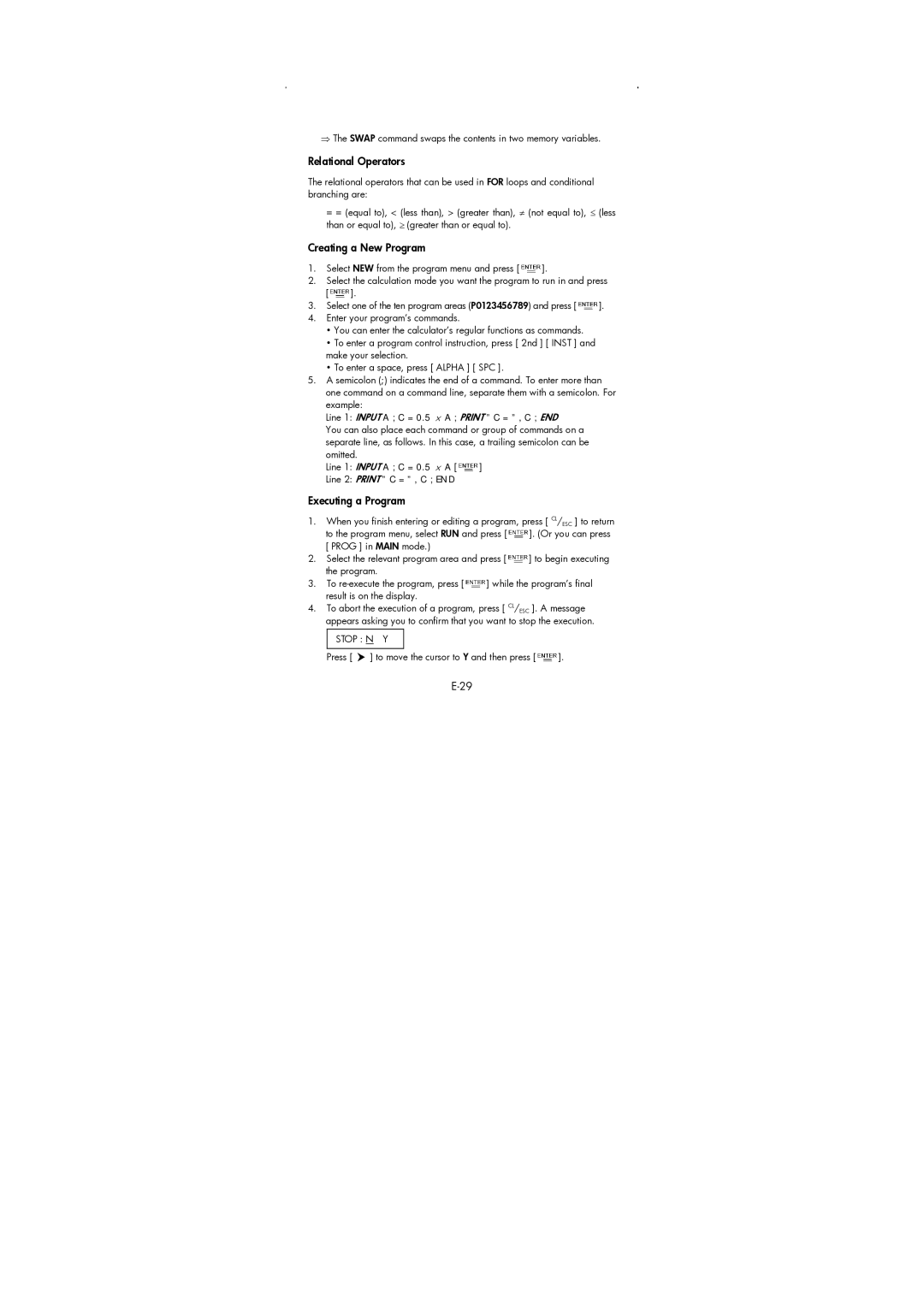
⇒The SWAP command swaps the contents in two memory variables.
Relational Operators
The relational operators that can be used in FOR loops and conditional branching are:
== (equal to), < (less than), > (greater than), ≠ (not equal to), ≤ (less than or equal to), ≥ (greater than or equal to).
Creating a New Program
1.Select NEW from the program menu and press [![]() ].
].
2.Select the calculation mode you want the program to run in and press
[![]() ].
].
3.Select one of the ten program areas (P0123456789) and press [![]() ].
].
4.Enter your program’s commands.
•You can enter the calculator’s regular functions as commands.
•To enter a program control instruction, press [ 2nd ] [ INST ] and make your selection.
•To enter a space, press [ ALPHA ] [ SPC ].
5.A semicolon (;) indicates the end of a command. To enter more than one command on a command line, separate them with a semicolon. For example:
Line 1: INPUT A ; C = 0.5 × A ; PRINT ” C = ” , C ; END
You can also place each command or group of commands on a separate line, as follows. In this case, a trailing semicolon can be omitted.
Line 1: INPUT A ; C = 0.5 × A [![]() ]
]
Line 2: PRINT ” C = ” , C ; END
Executing a Program
1.When you finish entering or editing a program, press [ CL/ESC ] to return
to the program menu, select RUN and press [![]() ]. (Or you can press [ PROG ] in MAIN mode.)
]. (Or you can press [ PROG ] in MAIN mode.)
2.Select the relevant program area and press [![]() ] to begin executing the program.
] to begin executing the program.
3.To ![]() ] while the program’s final result is on the display.
] while the program’s final result is on the display.
4.To abort the execution of a program, press [ CL/ESC ]. A message appears asking you to confirm that you want to stop the execution.
STOP : N Y
Press [ ![]() ] to move the cursor to Y and then press [
] to move the cursor to Y and then press [![]() ].
].
